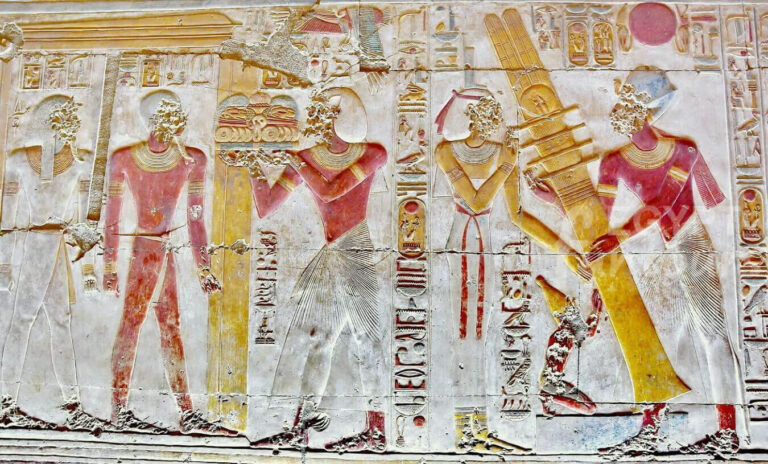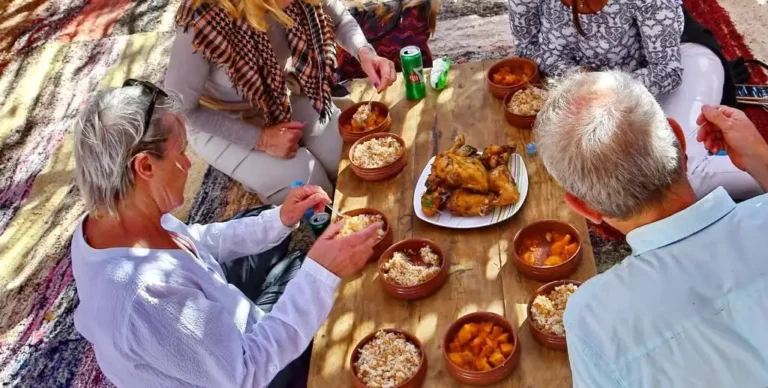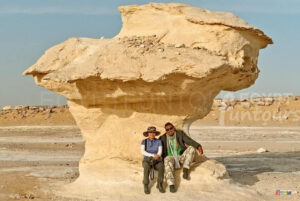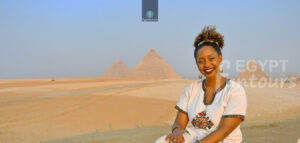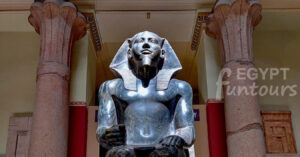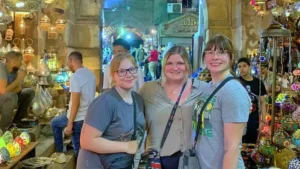A Glimpse into Ancient Egypt: Qasr El Sagha Temple and Its Surroundings
The Qasr El Sagha Temple lies 101 kilometers from Cairo, north of Lake Qarun. As a matter of fact, its name translates to “Goldsmiths’ Palace.” The temple was lost for years. However, in 1884, the archaeologist Schweinfurth rediscovered it. At that time, it was hiding in the desert, blending into the hills behind it. The temple is rectangular and made of local sandstone. The stones are uneven in size, but they fit together precisely.
The temple’s southern entrance is crowned with a huge lintel. Beyond the entrance, it leads to a spacious hallway. From this hallway, you can enter seven roofed shrines in the northern wall. In addition, a small hallway off the central passage leads to a chamber the width of the temple. Two small, connected chambers lie on the western side. On the other hand, a short tunnel is in the southern wall on the east side. Archaeologist Caton-Thompson discovered a Middle Kingdom graveyard and a settlement of stone tools nearby. Ultimately, this finding suggests that people established the temple during the Middle Kingdom.
The Quay: A Port for Ancient Stone
Around 700 meters to the southeast of Qasr el Sagha, a massive pile of rocks sits on the ground. Archaeologist Gertrude Caton-Thompson first thought these were a dump for rock mined at Widan al-Faras. Now, we believe the rocks formed an ancient pier. People used the pier to transport basalt slabs mined at Widan al-Faras across the lake.
A Journey to the Temple and Its Neighbors
The distance from the main road to Qasr al-Sagha is 24.6 kilometers. Consequently, the trip takes about an hour and you’ll need a four-wheel-drive vehicle. To begin, the trail to Qasr el-Sagha and Dimeh starts on the north side of the Cairo-Fayoum road, 1.3 kilometers past the Kom Aushim Museum.
Afterward, follow the trail for three kilometers until you reach a fork. At that point, bear right onto a graded road. Then, this road will take you through quarries and into the desert. Be aware that it’s a rough and bumpy ride. Eventually, you’ll see your destinations about 20 to 21 kilometers from the start of your trip. Dimeh rises from the desert floor, and Qasr al-Sagha sits a bit to the right, halfway up a mountain. Furthermore, you can see the remains of the Deir Abu Lifa Monastery to the right, just below the mountain’s crest.
Finally, a sign for Qasr al-Sagha appears at the 22.5-kilometer mark. The road will then bear right at 24.6 kilometers and climb the mountain to the temple. Ultimately, you’ll find a parking area right in front of the monument.
The Deir Abu Lifa Monastery
The remains of the rock-hewn Deir Abu Lifa, or Monastery of Father Lifa, are two kilometers northeast of Qasr el Sagha. They sit high on the southeastern slope of the escarpment. The monastery was probably built by St. Panoukhius. It operated from the 7th to the 9th centuries. The monastery offered refuge for Christians during difficult times. Inscriptions suggest that people founded the monastery in 686.
Local stories claim hidden treasures exist in this monastery. When monks abandoned nearby monasteries, they supposedly stole their valuables and buried them at Deir Abu Lifa. In 1936, Henri Munier and André Pochan visited the site.


